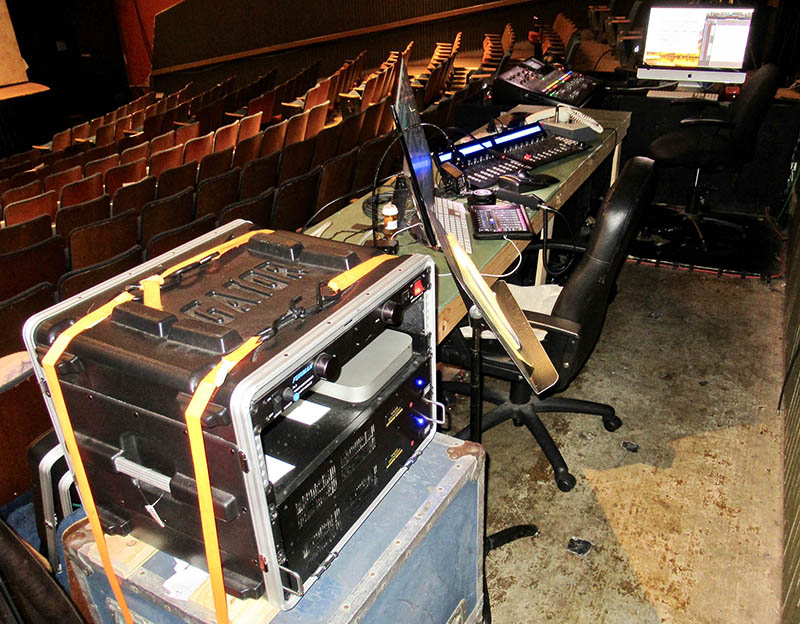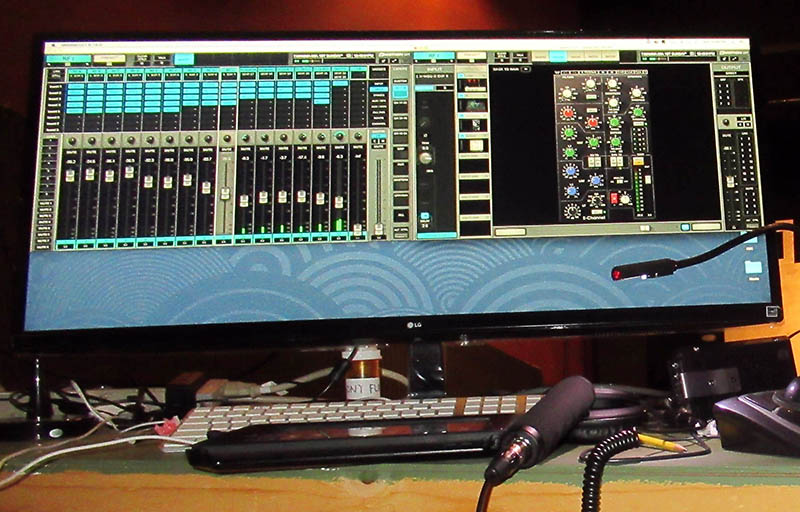
A cue could be called in this manner: “Cue 14F, Go,” and from those four simple words we know that lighting cue 14 and sound cue F both go at the same time – very efficient and clear. We don’t use “Q” or “W” in this nomenclature because they could create confusion; how would you call cue “Q.” When we run out of single letters, it goes double and then triple letter cues, i.e., “AA” and “EEE,” but for clarity, we say “Double A” and “Triple E.” Documenting everything and following the script is key to this method succeeding.

Having an assistant sound operator left me free to mix and optimize the aural experience for the audience. Thanks to 16 motorized faders on my soundboard, I had great control of the mix in real time.
I took advantage of the five dress rehearsals to adjust the plugins and overall mix so that during the actual performances, the only adjustments were minor and mostly for taste. The Waves eMotion LV1 system handles the mix, plugins, and all the routing, leaving the X32 as a wireless mute control. It eliminates some of the routing limitations of the Behringer X32, which restricts routing of the channels of the mixer to groups of eight if your firmware is older than version four.
I put the X32 channel faders at unity and the assistant sound operator worked with the stage manager to appropriately mute and un-mute the wireless mics on cue and I used the eMotion LV1 to route and mix the audio thus eliminating the routing limitations of the X32. This also allowed me to use Waves plugins live.
Finishing It Off
Plugins that proved helpful with this production were the Waves X-FDBK, F6 dynamic EQ, and the SSL G-Channel. The X- FDBK offered extra gain to add more punch to the singers while the F6 tamed the frequency and dynamic content of the voices for a more “studio mic” quality. G-Channel provided the perfect way to finish off the EQ and to put the dynamic range where I wanted it. There was no more than about 3-4 dB of boost or cut in any setting because these plugins were so effective.

Two iPads came in handy as well; one providing control of the X32 that sat alongside the assistant sound operator, the other allowing me to mix both backstage (monitors for the conductor and band), and out in the venue (house system). Being able to wander around, iPad in hand, helped get things balanced. The mixing of this show was a joy and I learned so much.
I designed and implemented the sound for “Mamma Mia” with a budget of zero-point-zero-zero dollars (in other words, $0.00). All of the years of careful planning and spending paid off. I didn’t buy a single thing for this show, exclusively using existing departmental (and personal) equipment, right down to the rechargeable batteries for the wireless transmitters.
I’ve said it a few times but will repeat it once again: the challenges that the sound designer faces in the theatre can only be overcome by the proper utilization of their talents, skills, experience, resourcefulness and creativity. Budget limitations are only challenges to overcome.
